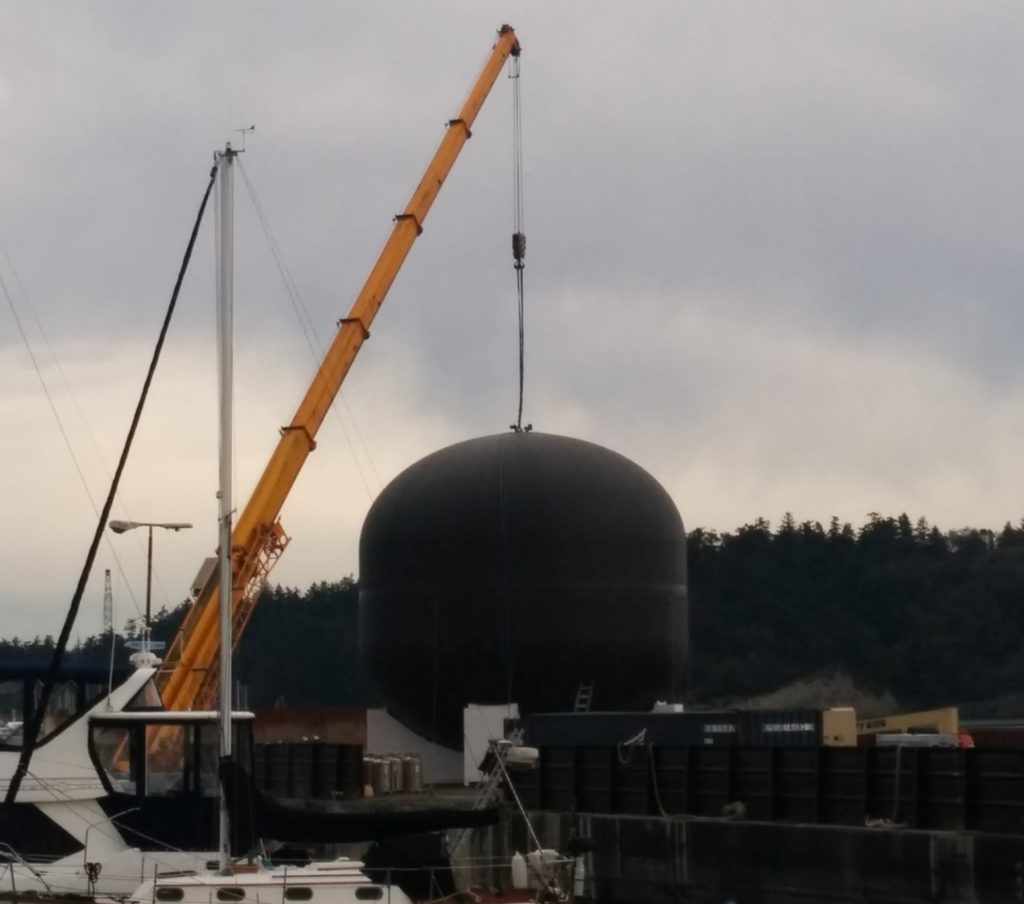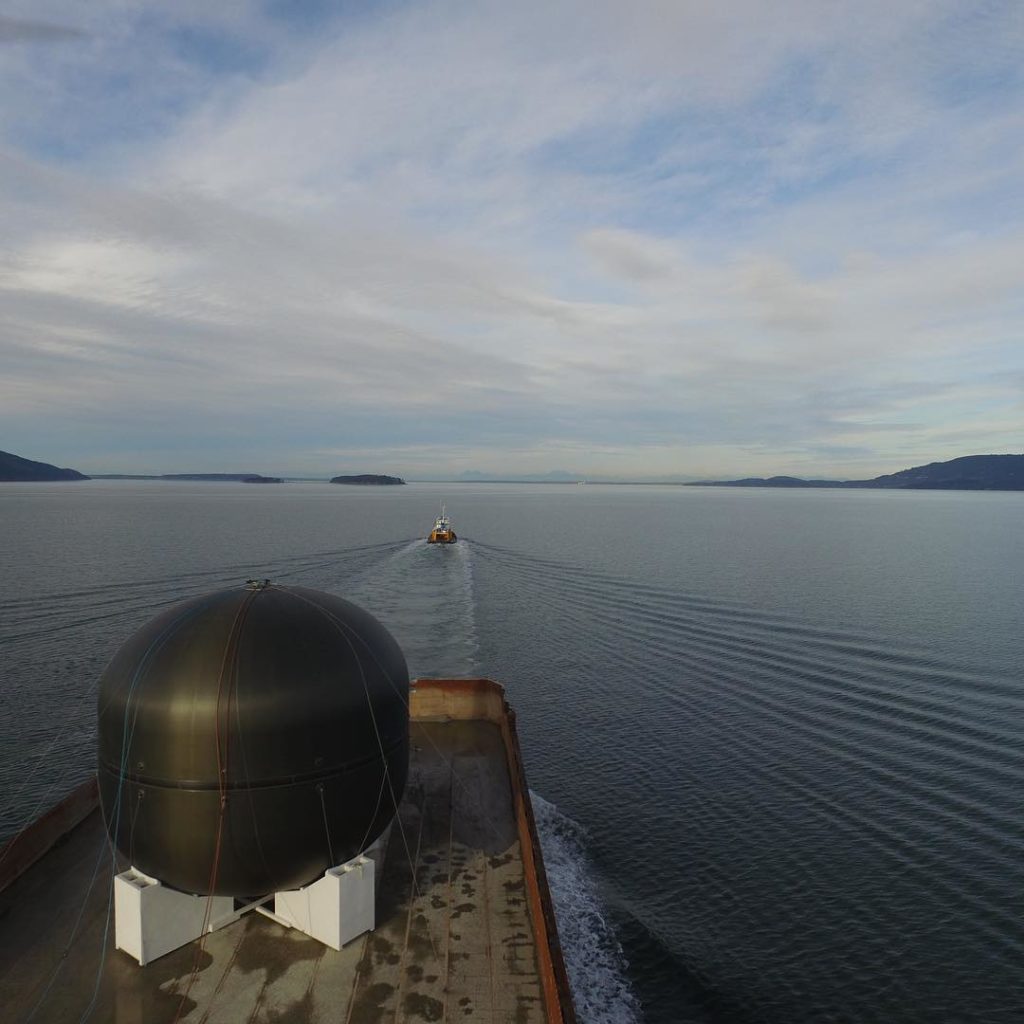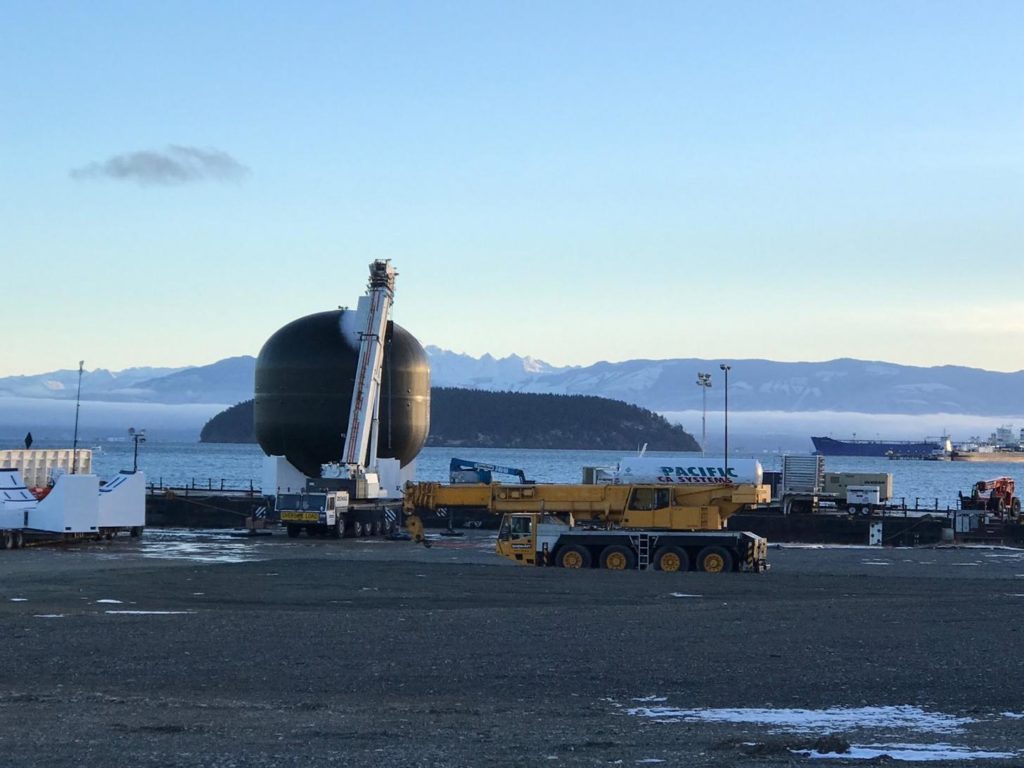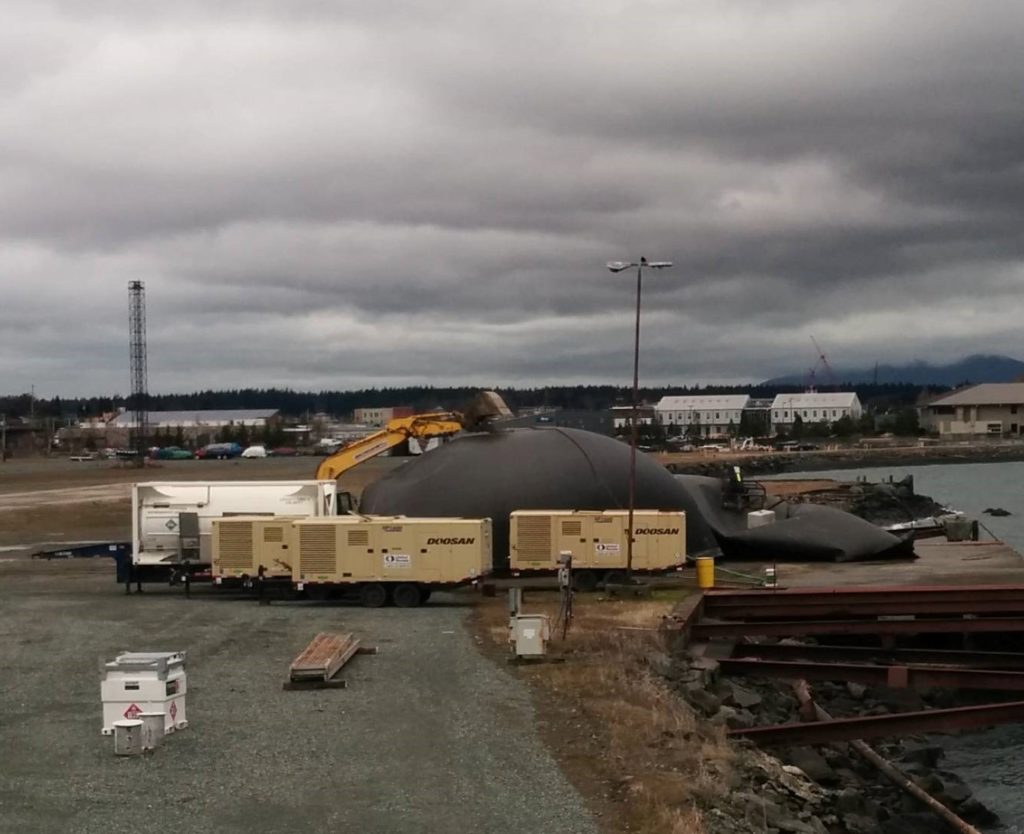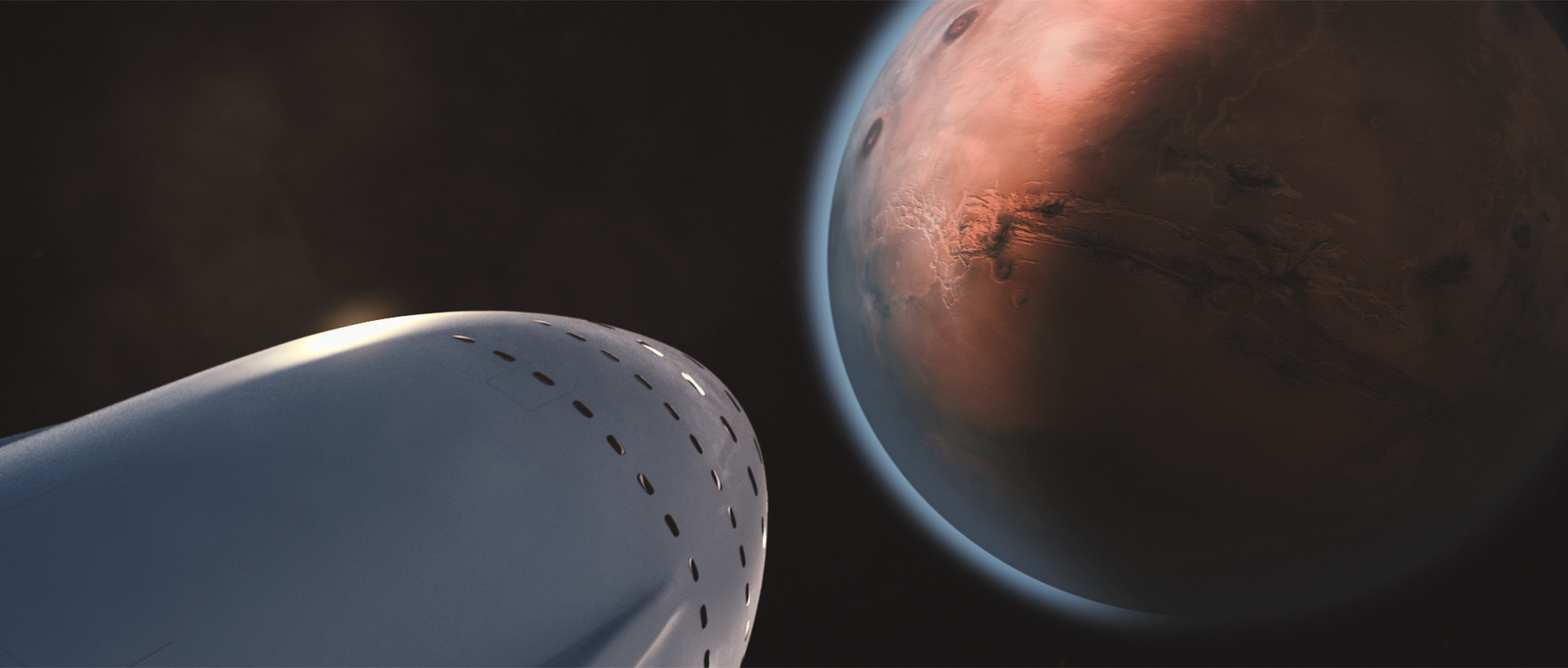

News
Elon Musk teases an update to SpaceX’s Mars architecture later this year
Elon Musk and SpaceX are aiming to provide a second update on the company’s Mars architecture plans in late September of this year, likely at the 2017 International Astronautical Congress (IAC) in Adelaide, Australia.
While 2017 has been extraordinarily busy and successful for SpaceX thus far, it has also been a somewhat quiet year for Mars and the technology being developed to colonize it affordably. There was a brief flurry of social media information focused on the testing of the ITS carbon composite test tank revealed at the 2016 IAC, with a few pictures and a video of its transport. This activity, as well as Elon Musk’s Ask Me Anything on /r/SpaceX, occurred a month or two after the 2016 IAC, in October and November.
https://www.instagram.com/p/BM4P6b_g2N9/?taken-by=spacex&hl=en
The only concrete information revealed about SpaceX’s Mars ambitions in 2017 have so far been distributed by Musk over Twitter and in an interview of SpaceX President and COO Gwynne Shotwell a few weeks ago. Musk offered tentative time frames for a possible update of the Mars architecture, stating that he believed it dealt with the far more crucial challenge of how to finance such a large endeavor’s significant R&D costs.
Maybe the upcoming IAC in Adelaide
— Elon Musk (@elonmusk) July 11, 2017
During his 2016 reveal, Musk estimated that something like $10 billion would be required to complete development and initial construction of the Raptor engine and ITS test articles. While it is believed that SpaceX has at least several hundred million dollars of liquid capital available, growing several billion dollars of capital is a much greater challenge that will likely require a different methodology than those typically employed by Musk.
Shotewell also discussed SpaceX’s Mars ambitions off and on during an hour-long interview on The Space Show. Of general interest, she mentioned that the current team working on Mars-related research and development was “tiny”, but that it would become a drastically more resource-intensive priority as the company completes work on the fifth and somewhat final “Block” of Falcon 9 and finishes the work necessary to begin routinely conducting Commercial Crew missions. Shotwell gave a timeline of “soon” for the beginning of Block 4 flights and “end of year” for the introduction of Block 5, which is intended to significantly increase the reusability of Falcon 9 (titanium grid fins are a feature of this strategy). Barring delays or setbacks for SpaceX, this implies that SpaceX will begin aggressively pursuing the concrete development of their Mars architecture as soon as the latter months of 2018 or sometime in 2019.

SpaceX revealed this stunning photo of Raptor’s first (partial) hot-fire test the night before Musk’s talk at Guadalajara. (SpaceX)
More specifically, however, Shotwell said that the Raptor test article revealed at the Guadalajara IAC has since conducted “dozens” of tests and is now more seriously considering the engine’s potential utility aboard Falcon 9. The current subscale Raptor components are approximately half the size of the final, operational design, and the need to scale up by as little as a factor of 2 should make the realization of the final design considerably less difficult, and make the testing of the current Raptor far more demonstrative of the operational engine. The exploration of vacuum Raptor as the engine of an upgraded second stage for Falcon 9 would further allow for true on-orbit testing of Raptor, and increasing the performance of S2 would allow for greater flexibility in exploring second stage reuse. Musk and Shotwell have expressed interest in this, particularly given that the second stage is approximately 30% of the cost of every Falcon 9, thus capping any potential cost savings first stage (and fairing) reuse may bring. If SpaceX wishes to lower the cost of launches by a factor of 10 to 100 and bring to life any form of the Mars architecture revealed in Guadalajara, they will have to develop second stage reusability that it is both as rapid, functional, and complete as they soon hope to make first stage reuse.
A fully reusable Falcon 9 would offer the company more cost-effective ways to launch their own profit-driving internet constellation, and could also simply provide deeper profit margins for their main business of commercial launches. However, with Musk having already publicly acknowledged that reusability cost SpaceX approximately $1 billion to develop, SpaceX is certainly already considering the plausibly diminishing returns of diverting more funds and human resources into the continued development of Falcon 9. The most likely outcome is almost certainly some combination of the above goals, whereby SpaceX would delay their Mars exploration timeline by several years and concurrently pursue Falcon 9 second stage reuse and the initial test article development for their Mars architecture, as well as exploring the challenges and intricacies of human spaceflight and deep space exploration with Dragon v2.
- The carbon composite LOX tank test article before its first pressurization testing in northern Washington, mid-November 2016. (Reddit /u/ Death_Cog_Unit)
- SpaceX’s massive carbon fiber liquid oxygen tank seen testing in Northern Washington. BFR’s tankage will be 25% narrower, and thus easier to manufacture. (SpaceX)
- The test article before testing in early February 2017, during which it is believed to have lost structural integrity and failed. (Reddit /u/TeddyBear3238)
- The remains of the test article tank after suspected over-pressure testing. Divers were required to salvage the remains over the course of several days. (Reddit /u/ Death_Cog_Machine)
Of note, the only known major testing event in 2017 related to SpaceX’s Mars program was observed by a SpaceX fan in February of this year. After successful November 2016 tests of the carbon composite tank in northern Washington state, fans noted that the tank had made an outdoors appearance once more in early February 2017. SpaceX mentioned on Instagram that the following test, the one SpaceX was preparing for in February, was a full cryo test of the tank, meaning that it involved actual high-pressure, supercooled liquid oxygen. Another fan noted several days later that the barge SpaceX was testing the tank aboard returned to port empty, and later observed what looked like several large pieces of the tank test article that reportedly had to be recovered from the sound by divers. The logical conclusion is that the tank was destroyed during its second phase of testing, but the crucial and currently unknown fact of the matter is whether the failure was a result of intentionally destructive testing or defects in what was effectively an experimental engineering article. Further SpaceX talks later this year will likely reveal some level of detail as to what transpired in the testing of that prototype carbon composite tank.
Reasoned speculation aside, the latter months of 2017 have multiple talks, speeches, and hearings planned by SpaceX members like Elon Musk and Tim Hughes, and information on SpaceX’s Mars ambitions and other future prospects will almost certainly be offered. Hughes is to attend a hearing at 9am EST on July 13th for the U.S. Senate on commercial space and will be testifying on the subject as a representative and employee of SpaceX. Just under a week later, Elon Musk is scheduled to be the main keynote speaker at the 2017 ISS R&D Conference. His talk is set to begin at 12:30pm EST on July 19th. A handful of months after that, as mentioned above, Musk may also provide a detailed update on SpaceX’s Mars architecture at the 2017 International Astronautical Congress.
In other words, on top of an aggressive 12 possible launches between August and the end of December, SpaceX fans also can look forward to details, photos, and possibly even more about the company’s Mars efforts over the next several months.
Elon Musk
Tesla investors will be shocked by Jim Cramer’s latest assessment
Jim Cramer is now speaking positively about Tesla, especially in terms of its Robotaxi performance and its perception as a company.

Tesla investors will be shocked by analyst Jim Cramer’s latest assessment of the company.
When it comes to Tesla analysts, many of them are consistent. The bulls usually stay the bulls, and the bears usually stay the bears. The notable analysts on each side are Dan Ives and Adam Jonas for the bulls, and Gordon Johnson for the bears.
Jim Cramer is one analyst who does not necessarily fit this mold. Cramer, who hosts CNBC’s Mad Money, has switched his opinion on Tesla stock (NASDAQ: TSLA) many times.
He has been bullish, like he was when he said the stock was a “sleeping giant” two years ago, and he has been bearish, like he was when he said there was “nothing magnificent” about the company just a few months ago.
Now, he is back to being a bull.
Cramer’s comments were related to two key points: how NVIDIA CEO Jensen Huang describes Tesla after working closely with the Company through their transactions, and how it is not a car company, as well as the recent launch of the Robotaxi fleet.
Jensen Huang’s Tesla Narrative
Cramer says that the narrative on quarterly and annual deliveries is overblown, and those who continue to worry about Tesla’s performance on that metric are misled.
“It’s not a car company,” he said.
He went on to say that people like Huang speak highly of Tesla, and that should be enough to deter any true skepticism:
“I believe what Musk says cause Musk is working with Jensen and Jensen’s telling me what’s happening on the other side is pretty amazing.”
Tesla self-driving development gets huge compliment from NVIDIA CEO
Robotaxi Launch
Many media outlets are being extremely negative regarding the early rollout of Tesla’s Robotaxi platform in Austin, Texas.
There have been a handful of small issues, but nothing significant. Cramer says that humans make mistakes in vehicles too, yet, when Tesla’s test phase of the Robotaxi does it, it’s front page news and needs to be magnified.
He said:
“Look, I mean, drivers make mistakes all the time. Why should we hold Tesla to a standard where there can be no mistakes?”
It’s refreshing to hear Cramer speak logically about the Robotaxi fleet, as Tesla has taken every measure to ensure there are no mishaps. There are safety monitors in the passenger seat, and the area of travel is limited, confined to a small number of people.
Tesla is still improving and hopes to remove teleoperators and safety monitors slowly, as CEO Elon Musk said more freedom could be granted within one or two months.
News
Tesla launches ultra-fast V4 Superchargers in China for the first time
Tesla has V4 Superchargers rolling out in China for the first time.

Tesla already has nearly 12,000 Supercharger piles across mainland China. However, the company just initiated the rollout of the ultra-fast V4 Superchargers in China for the first time, bringing its quick-charging piles to the country for the first time since their launch last year.
The first batch of V4 Superchargers is now officially up and running in China, the company announced in a post on Chinese social media outlet Weibo today.
The company said in the post:
“The first batch of Tesla V4 Superchargers are online. Covering more service areas, high-speed charging is more convenient, and six-layer powerful protection such as rain and waterproof makes charging very safe. Simultaneously open to non-Tesla vehicles, and other brands of vehicles can also be charged. There are more than 70,000 Tesla Superchargers worldwide. The charging network layout covers 100% of the provincial capitals and municipalities in mainland China. More V4 Superchargers will be put into use across the country. Optimize the charging experience and improve energy replenishment efficiency. Tesla will accompany you to the mountains, rivers, lakes, and seas with pure electricity!”
The first V4 Superchargers Tesla installed in China are available in four cities across the country: Shanghai, Zhejiang, Gansu, and Chongqing.

Credit: Tesla China
Tesla has over 70,000 Superchargers worldwide. It is the most expansive and robust EV charging network in the world. It’s the main reason why so many companies have chosen to adopt Tesla’s charging connector in North America and Europe.
In China, some EVs can use Tesla Superchargers as well.
The V4 Supercharger is capable of charging vehicles at speeds of up to 325kW for vehicles in North America. This equates to over 1,000 miles per hour of charging.
Elon Musk
Elon Musk hints at when Tesla could reduce Safety Monitors from Robotaxi
Tesla could be reducing Safety Monitors from Robotaxi within ‘a month or two,’ CEO Elon Musk says.

Elon Musk hinted at when Tesla could begin reducing Safety Monitors from its Robotaxis. Safety Monitors are Tesla employees who sit in the front passenger seat during the driverless rides, and are there to ensure safety for occupants during the earliest rides.
Tesla launched its Robotaxi fleet in Austin last Sunday, and after eight days, videos and reviews from those who have ridden in the driverless vehicles have shown that the suite is safe, accurate, and well coordinated. However, there have been a few hiccups, but nothing that has put anyone’s safety in danger.
A vast majority — close to all of the rides — at least according to those who have ridden in the Robotaxi, have been performed without any real need for human intervention. We reported on what was the first intervention last week, as a Safety Monitor had to step in and stop the vehicle in a strange interaction with a UPS truck.
Watch the first true Tesla Robotaxi intervention by safety monitor
The Tesla and UPS delivery truck were going for the same street parking space, and the Tesla began to turn into it. The UPS driver parallel parked into the spot, which was much smaller than his truck. It seemed to be more of an instance of human error instead of the Robotaxi making the wrong move. This is something that the driverless cars will have to deal with because humans are aggressive and sometimes make moves they should not.
The Safety Monitors have not been too active in the vehicles. After all, we’ve only seen that single instance of an intervention. There was also an issue with the sun, when the Tesla braked abnormally due to the glare, but this was an instance where the car handled the scenario and proceeded normally.
With the Robotaxi fleet operating impressively, some are wondering when Tesla will begin scaling back both the Safety Monitors and Teleoperators that it is using to ensure safety with these early rides.
CEO Elon Musk answered the inquiry by stating, “As soon as we feel it is safe to do so. Probably within a month or two.”
As soon as we feel it is safe to do so.
Probably within a month or two. We continue to improve the Tesla AI with each mile driven.
— Elon Musk (@elonmusk) June 30, 2025
Musk’s response seems to confirm that there will be fewer Teleoperators and Safety Monitors in the coming months, but there will still be some within the fleet to ensure safety. Eventually, that number will get to zero.
Reaching a point where Tesla’s Robotaxi is driverless will be another significant milestone for the company and its path to fully autonomous ride-sharing.
Eventually, Tesla will roll out these capabilities to consumer-owned vehicles, offering them a path to generate revenue as their car operates autonomously and completes rides.
For now, Tesla is focusing on perfecting the area of Austin where it is currently offering driverless rides for just $4.20 to a small group of people.
-

 News5 days ago
News5 days agoTesla Robotaxi’s biggest challenge seems to be this one thing
-

 News2 weeks ago
News2 weeks agoTesla confirms massive hardware change for autonomy improvement
-

 Elon Musk2 weeks ago
Elon Musk2 weeks agoElon Musk slams Bloomberg’s shocking xAI cash burn claims
-

 News2 weeks ago
News2 weeks agoTesla China roars back with highest vehicle registrations this Q2 so far
-

 News2 weeks ago
News2 weeks agoTesla features used to flunk 16-year-old’s driver license test
-

 News2 weeks ago
News2 weeks agoTexas lawmakers urge Tesla to delay Austin robotaxi launch to September
-

 News2 weeks ago
News2 weeks agoTesla dominates Cars.com’s Made in America Index with clean sweep
-

 News2 weeks ago
News2 weeks agoTesla’s Grok integration will be more realistic with this cool feature

